Demopolis, Alabama (City of the People)
 Demopolis, Alabama is where the “City of the People” and two rivers meet. Demopolis is located on the white bluffs just below where the Tombigbee River and Black Warrior River come together. It was founded by a group of political exiles who had been banished from France following the defeat of Napoleon Bonaparte. This group reached the White Bluffs (the present site of Demopolis) on July 14, 1817 and established the “Vine and Olive Colony”. Their plan was to develop an agricultural settlement that grew wine grapes and olive trees. Their attempts failed and after a few years the settlements were practically abandoned by the French refugees. These French settlers are responsible for naming Demopolis. This is a Greek word that means the people's city (demo: people and polis: city), thus the origin of the term “City of the People”.
Today, Demopolis is the largest city in Marengo County - population 7540 according to the 2000 census. Demopolis has something to offer everybody. It is located on beautiful Demopolis Lake which is the largest lake in the Black Warrior-Tombigbee system. The lake extends 48 miles upriver on the Black Warrior, 53 miles up the Tombigbee and covers 10,000 acres. There is a beautiful U. S. Army Corp of Engineers’ campground and a large, full service yacht marina located in Demopolis on the lake. The Demopolis area has many historic homes, churches and businesses. There are antebellum mansions available for touring that provide a snapshot of life in earlier times. Additionally, Demopolis’s historic downtown district has a beautiful one square block park that is one of the oldest parks in Alabama.
Below are details about some of the sites that you will find in Demopolis:
Demopolis, Alabama is where the “City of the People” and two rivers meet. Demopolis is located on the white bluffs just below where the Tombigbee River and Black Warrior River come together. It was founded by a group of political exiles who had been banished from France following the defeat of Napoleon Bonaparte. This group reached the White Bluffs (the present site of Demopolis) on July 14, 1817 and established the “Vine and Olive Colony”. Their plan was to develop an agricultural settlement that grew wine grapes and olive trees. Their attempts failed and after a few years the settlements were practically abandoned by the French refugees. These French settlers are responsible for naming Demopolis. This is a Greek word that means the people's city (demo: people and polis: city), thus the origin of the term “City of the People”.
Today, Demopolis is the largest city in Marengo County - population 7540 according to the 2000 census. Demopolis has something to offer everybody. It is located on beautiful Demopolis Lake which is the largest lake in the Black Warrior-Tombigbee system. The lake extends 48 miles upriver on the Black Warrior, 53 miles up the Tombigbee and covers 10,000 acres. There is a beautiful U. S. Army Corp of Engineers’ campground and a large, full service yacht marina located in Demopolis on the lake. The Demopolis area has many historic homes, churches and businesses. There are antebellum mansions available for touring that provide a snapshot of life in earlier times. Additionally, Demopolis’s historic downtown district has a beautiful one square block park that is one of the oldest parks in Alabama.
Below are details about some of the sites that you will find in Demopolis:

Ashe Cottage, also known as the Ely House, is a historic Carpenter Gothic house in Demopolis. It was built circa 1832 and expanded and remodeled in th …

Bluff Hall is located atop a limestone cliff overlooking the Tombigbee River in Demopolis. The house was built in 1832 by Allen Glover for his daughte …

The Curtis House, also known as the Howze-Culpepper House, was built circa 1840 by Samuel Curtis, a Revolutionary War veteran who was born in Queen An …

The Demopolis Yacht Basin is a full service marina at Demopolis, AL on the Tennessee-Tombigbee waterway. It has in-water and dry storage for boats an …

The first official post office to serve the present city of Demopolis was designated Aigleville (literally translated as Eagle Town), the village of F …
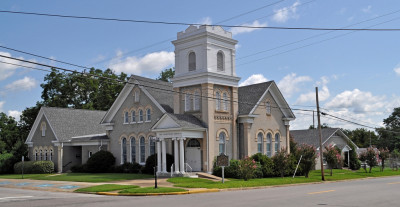
The First Presbyterian Church in Demopolis was organized by the Tuscaloosa Presbytery on November 1, 1839 with nine members. The congregation erected …
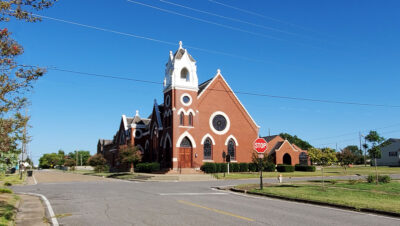
The exact date of the founding of the Demopolis Methodist Church is not known. However, the circuit riders of the Marengo Circuit (1826-1840) were ac …

Foscue Creek Park is located at Demopolis, AL on the forested lake shore of Demopolis Lake, the largest lake on the Black Warrior-Tombigbee Waterway. …
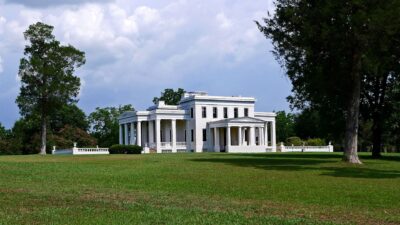
Constructed over an 18 year period (1843-1861), Gaineswood evolved from a two-room “dogtrot” cabin into a Greek Revival style mansion. General Nathan …

In 1878, John C. Webb purchased this block of land and house, believed to have been built after 1869. An early photograph shows an Italianate style ho …

The Laird Cottage is a restored 1870 residence with Greek Revival and Italianate style. The building now serves as the headquarters of the Marengo Cou …

In 1986, the Marengo County Historical Society (MCHS) was notified that a log cabin had been discovered hidden inside a turn-of-the-century house that …
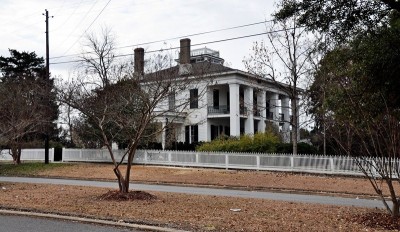
Lyon Hall, also known as the Lyon-Lamar House, is a historic Greek Revival mansion in Demopolis, Alabama. It was built over a period of three years by …

This church was built in 1920. In 1964, Reverend Martin Luther King, Jr. spoke at the Morning Star Church and it became a center for the civil rights …
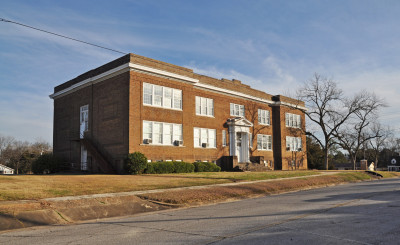
This is a two-story building with a full basement that was built in 1913-1914. It was designed by a leading Alabama architect of the period, Frank Loc …
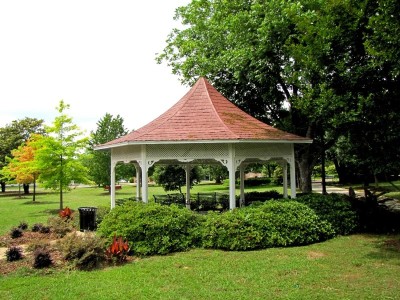
The Demopolis Public Square is one of the oldest in Alabama dating back to ca. 1819. The park was added to the National Register of Historic Places (N …
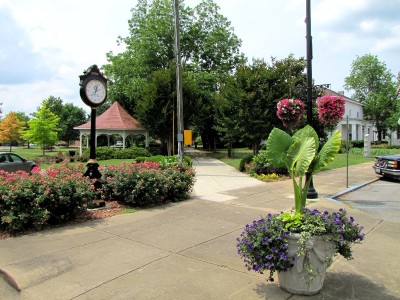
The Public Square is a historic park located at downtown Demopolis. It covers one city block, bounded by Main, Capitol, Walnut and Washington Streets …

This is one of the oldest and most historic buildings in Demopolis. It was built in 1843 by the Presbyterians of Demopolis using locally-made bricks. …

Julius Rosenbush, a German Jewish immigrant, settled in Demopolis in the late 1800s and established the Rosenbush Furniture Company in 1895. After his …

This building was built circa 1909 by John Cox Webb, Jr. It opened as the Elks Theater on October 1, 1915. Harry Simon and Tom Nonnenmacher acquired t …

Catholicism was first introduced to this region in 1540 by the priests who accompanied Hernando DeSoto. The French Napoleonic exiles of the Vine and O …
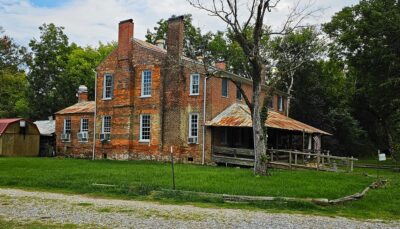
This house was built in 1840 for Augustus Foscue, a North Carolina native who owned more than 3,000 acres and 137 slaves in Marengo County by 1850. Th …

This Greek Revival-style mausoleum was built between 1841 and 1845 on a chalk bluff overlooking the Tombigbee River in Demopolis. It was built by Mary …

Demopolis has a long tradition of theaters. The Braswell Theater opened in 1902. Next was the Elks/Si-Non/Lido that operated from 1915 to 1935. On …
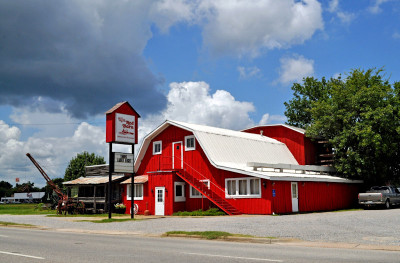
The Red Barn Restaurant is one of the oldest restaurants in the area and it serves some of the best food around. The restaurant opened in 1971 and the …

The Trinity Episcopal Church was founded in 1834 and is the third oldest church in the Diocese of Alabama. The congregation met in homes and a small l …

White Bluff, also known as Ecor Blanc, is a historic site located along the Tombigbee River in Demopolis. It is a chalk cliff, roughly one mile long, …
